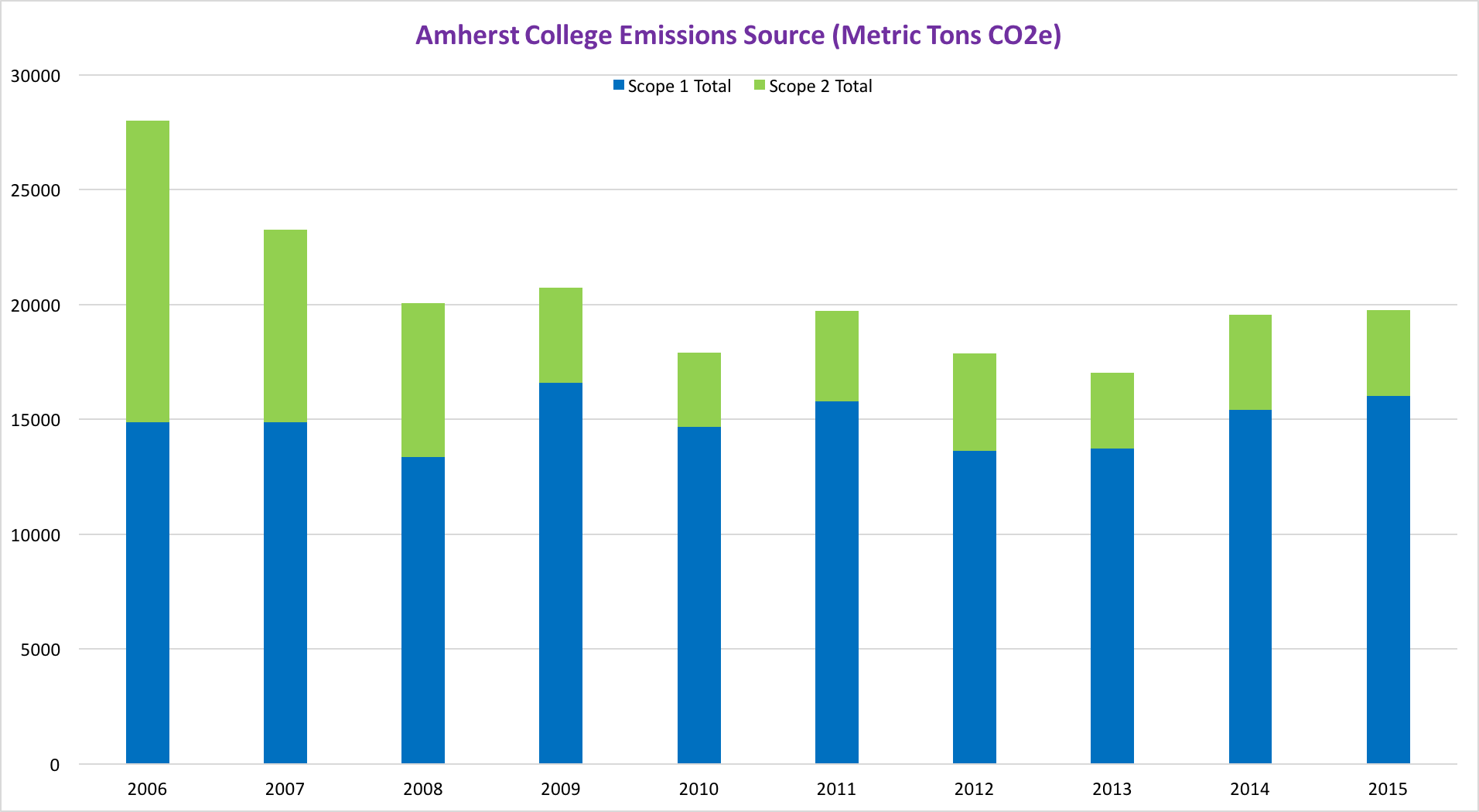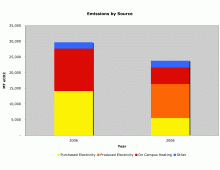The following charts illustrate Amherst College's greenhouse gas emissions from the year 2006 through to 2015.


Scope 1 denotes direct emissions that come from the burning of combustion fuels on campus. Distillate oil, natural gas and residual oil are the top contributing fuels to the College's emissions.
Scope 2 refers to indirect emissions that arise from the consumption of purchased electricity. As can be seen from the charts, the introduction of the cogeneration plant in 2008 dramatically reduced scope 2 emissions.
Amherst College began a detailed historic inventory of greenhouse gas (GHG) emissions in June 2007. Conor McDowell (‘09) conducted the study using Clean Air – Cool Planet's GHG Emissions Inventory Calculator and was advised by Energy Manager Todd Holland and Professor Whitey Hagadorn.
Preliminary data shows results similar to those at other area residential colleges — that electricity consumption and fuel burned on-site for heat comprises over 90% of the GHG emissions. Amherst College's GHG footprint for 2006 was 29,191 tons of equivalent carbon dioxide (eCO2) emissions.
For ease of comparison and to create a standard of measurement, the GHGs are equated and expressed in carbon dioxide equivalents (eCO2). eCO2 is the combined global warming potential of several pollutants, chiefly:
- Carbon Dioxide (CO2): global warming potential (GWP) = 1.0
- Methane (CH4): GWP = 23 times that of CO2
- Oxides of Nitrogen (N2O or NOx): GWP= 296
Source: EPA: US Emissions Inventory 2003
Progress
Amherst's GHG emissions peaked in 2005 at 29% over 1990 levels. Although conservation measures realized a significant (9%) reduction in 2006, we are still 18% above 1990 levels.
|
|
||
Click image to enlarge |
Click image to enlarge |
|
Pre- and Post-Cogen GHG Emissions |
Post-Cogen GHG Emissions |
The cogeneration plant, expected to be on-line in 2008, will make a very significant reduction in GHG emissions and should drop us to 5% below 1990 levels.The Kyoto Protocol specifies a goal 7% below 1990 levels for the US by 2012, and this is entirely attainable by combining cogeneration with conservation and efficiency measures.

